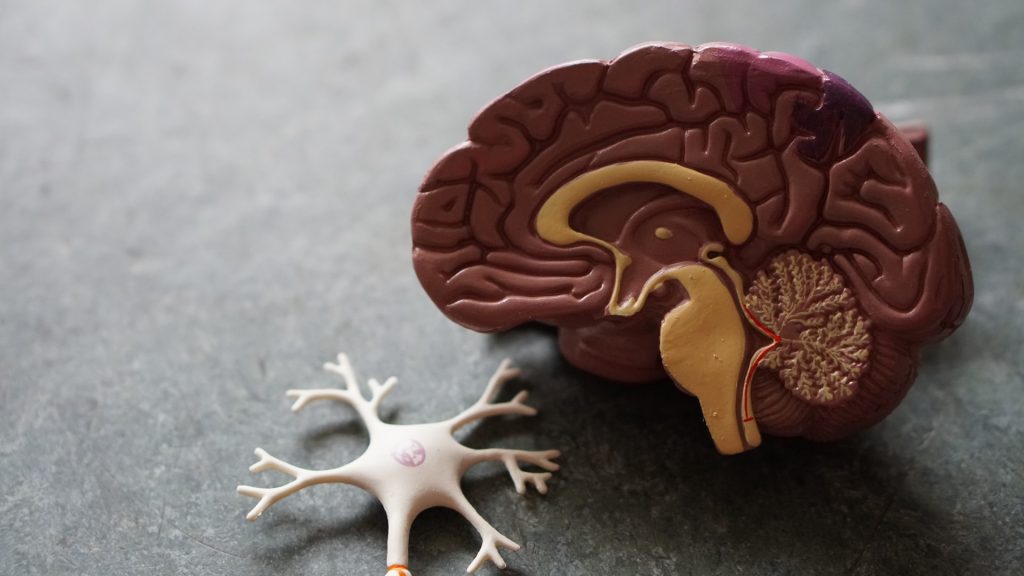Scientists Definitively Reveal the Brain’s Elusive Glymphatic System

Scientists have long theorised about a network of pathways in the brain that are believed to clear metabolic proteins that would otherwise build up and potentially lead to Alzheimer’s and other forms of dementia. But they had never definitively revealed this network in people – until now.
A new study involving five patients undergoing brain surgery at Oregon Health & Science University provides imaging of this network of perivascular spaces (fluid-filled structures along arteries and veins) within the brain for the first time.
“Nobody has shown it before now,” said senior author Juan Piantino, MD, associate professor of pediatrics (neurology) in the OHSU School of Medicine and a faculty member of the Neuroscience Section of the Papé Family Pediatric Research Institute at OHSU. “I was always skeptical about it myself, and there are still a lot of skeptics out there who still don’t believe it. That’s what makes this finding so remarkable.”
The findings appear in the Proceedings of the National Academy of Sciences.
The study combined the injection of an inert contrasting agent with a special type of magnetic resonance imaging to discern cerebrospinal fluid flowing along distinct pathways in the brain 12, 24 and 48 hours following surgery. In definitively revealing the presence of an efficient waste-clearance system within the human brain, the new study supports the promotion of lifestyle measures and medications already being developed to maintain and enhance it.
“This shows that cerebrospinal fluid doesn’t just get into the brain randomly, as if you put a sponge in a bucket of water,” Piantino said. “It goes through these channels.”
More than a decade ago, scientists at the University of Rochester first proposed the existence of a network of waste-clearance pathways in the brain akin to the body’s lymphatic system, part of the immune system. Those researchers confirmed it with real-time imaging of the brains of living mice. Due to its dependence on glial cells in the brain, they coined the term “glymphatic system” to describe it.
However, scientists had yet to confirm the existence of the glymphatic system through imaging in people.
Pathways revealed in patients
The new study examined five OHSU patients who underwent neurosurgery to remove tumours in their brains between 2020 and 2023. In each case, the patients consented to having a gadolinium-based inert contrasting agent injected through a lumbar drain used as part of the normal surgical procedure for tumour removal. The tracer would be carried with cerebrospinal fluid into the brain.
Afterward, each patient underwent magnetic resonance imaging, or an MRI, at different time points to trace the spread of cerebrospinal fluid.
Rather than diffusing uniformly through brain tissue, the images revealed fluid moving along pathways — through perivascular spaces in clearly defined channels. Researchers documented the finding with a specific kind of MRI known as fluid attenuated inversion recovery, or FLAIR. This type of imaging is sometimes used following the removal of tumors in the brain. As it turns out, it also revealed the gadolinium tracer in the brain, whereas the standard MRI sequences did not.
“That was the key,” Piantino said.
“You can actually see dark perivascular spaces in the brain turn bright,” said co-lead author Erin Yamamoto, MD, a resident in neurological surgery in the OHSU School of Medicine. “It was quite similar to the imaging the Rochester group showed in mice.”
Clearing waste from the brain
Scientists believe this network of pathways effectively flushes the brain of metabolic wastes generated by its energy-intensive work. Wastes include proteins such as amyloid and tau, which have been shown to form clumps and tangles in brain images of patients with Alzheimer’s disease.
Emerging research suggests medications that may be useful, but much of the focus around the glymphatic system has revolved around lifestyle-based measures to improve the quality of sleep, such as maintaining a regular sleep schedule, establishing a relaxing routine, and avoiding screens in the bedroom before bed. Especially at night during deep sleep, researchers believe a well-functioning glymphatic system efficiently carries waste proteins toward veins exiting the brain.
“People thought these perivascular spaces were important, but it had never been proved,” Piantino said. “Now it has.”
The authors credited the late Justin Cetas, MD, PhD, who initiated the study as an OHSU neurosurgeon before leaving the university to become chair of neurological surgery at his alma mater, the University of Arizona Health Sciences Center in Tucson. He died in a motorcycle accident in 2022.


